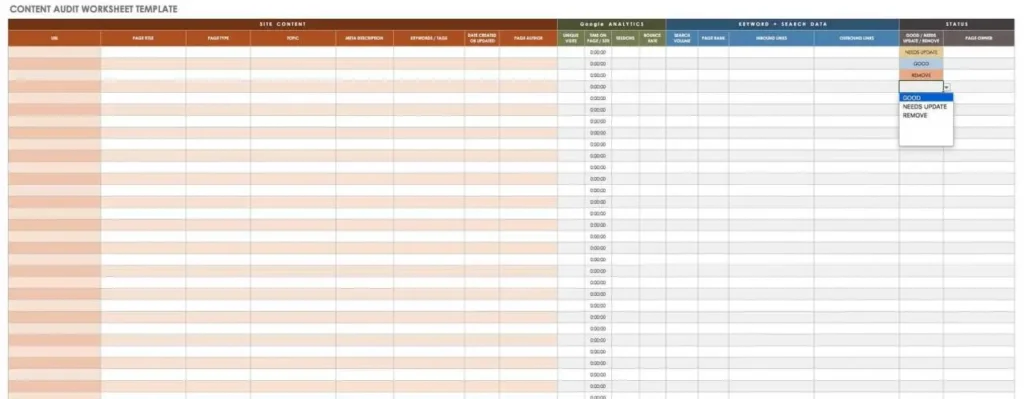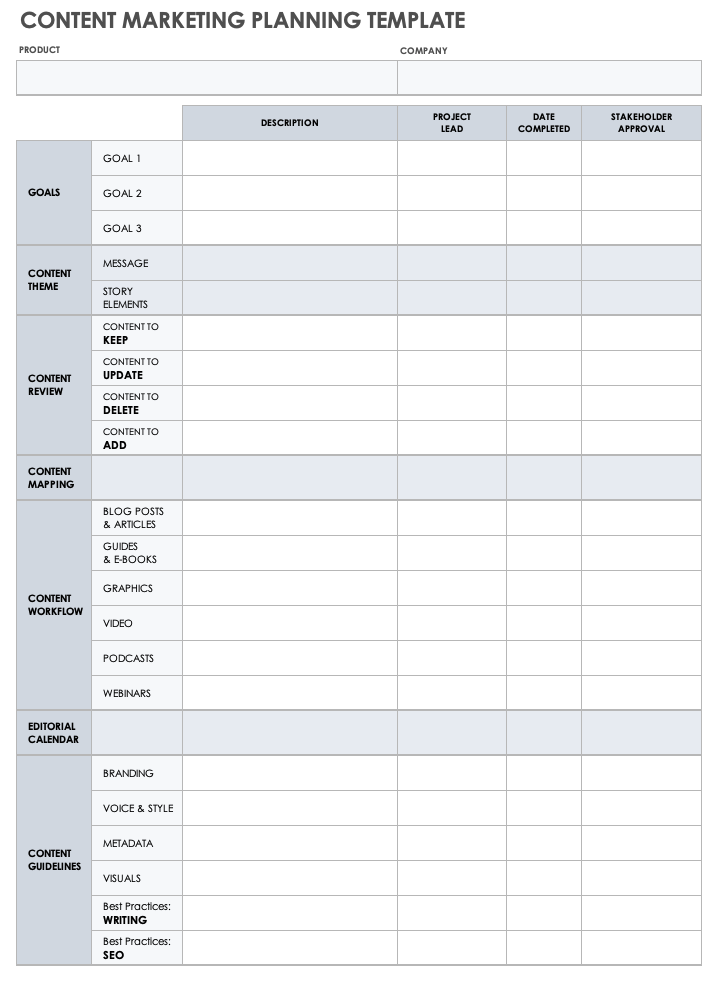Many marketing organizations prioritize using content to increase brand awareness, generate leads, and build trust and credibility. In fact, according to the Content Marketing Institute (CMI), 73% of B2B and 70% of B2C marketers use content marketing as part of their overall marketing strategy.
A good content marketing strategy is crucial to any marketing strategy, and here are some ideas on how to get started.
What is a content strategy?
A content marketing strategy is a plan to create, publish, and distribute valuable and relevant content to attract and engage a target audience. A content strategy includes answers to the following questions:
- Goals: Whether the objective of the content strategy is to increase brand awareness, generate new leads, or improve customer retention, which ones are the top priorities?
- Audience: Who are the intended consumers of the content? They could be prospects, customers, investors, industry analysts, or the public. Don’t forget to consider your buyer personas.
- Content themes: What overarching topics or categories will be covered to meet the audience’s needs at every stage of the marketing funnel?
- Content types: What types of content will you create? Include blogs, videos, infographics, podcasts, eBooks, whitepapers, and social media posts in your list.
- Content creation resources: What internal resources, agencies, and freelancers will create, edit and promote the various content types?
- Content audit and reuse: What will be the process and target to refresh, reuse and repurpose existing content?
- Content distribution and promotion: How will content be shared and promoted across the various marketing resources, including website, social media platforms, email newsletters, guest blogs, and partnerships with other websites?
- KPIs: How will the content’s performance be tracked? Metrics may include website traffic, engagement rates, lead generation, conversion rates, and ROI.
Why create a content marketing strategy?
A content strategy helps you create content that aligns with your business goals and audience needs. It also ensures that marketing efforts and resources are used efficiently and focused on generating value.
How to create a content strategy
Here is one way to get started with your content marketing strategy.
Start with your business and marketing goals
Look at your organization’s and marketing team’s business plan to better understand what you want to achieve in the next 3 months, 12 months, 2 years and 3 years.
Maybe you want to increase sales, prepare to launch a new product, or increase advocacy for a particular issue. Whatever your goals, knowing where you want to be will help you decide your content direction and KPIs.
Reference your personas
Your goals will help you determine your audience. Use your persona profiles to get to know your audience and learn about their challenges, needs, interests, behaviours, preferred content types and channels. These will guide you on your content themes and distribution methods.
Don’t just look at your buyer personas. Consider also your users and influencers who may be engaging your content and helping drive the outcomes you seek.
Look at your competitors
Look at your market positioning to understand how you differ from your competitors. Use this information to help build your messaging, creative briefs and content topics.
Once you know your angle, audit your competitor’s content to better understand their content strategy, strengths, and weaknesses. Use this information to leverage what works and where you may be able to stand out.
Audit your existing content
Make a list of your existing content pieces to better understand what you already have, what can be reused, what needs to be removed, and what can be repurposed as new content.
When auditing your existing content, map the title, location, theme, target audience, relevant KPIs, and whether the content should stay, go, or be reworked.
Below is a free Smartsheet template for tracking your existing content assets.
Build your content plan
Start by deciding on the broad themes and specific topics that will guide content creation. Then, build your editorial calendar, which details the content topics, formats, publication dates, and responsible parties.
Depending on your content goals and team size, the above content strategy template might not be detailed enough to help you communicate and project manage your content delivery plan.
For this reason, you may want to build additional content strategy plans for your digital, social media, blog, video, and website content.
Develop content creation guidelines
To ensure brand voice, tone and style consistency, build content creation guidelines including:
- A visual style guide which outlines font styles, sizes, and spacing (typography), primary and secondary logos, icons, primary and secondary colours with HEX, RGB, CMYK, and Pantone codes, photo guidelines, illustrations, and artwork to ensure visual consistency for digital and print assets. Remember to include usage examples of acceptable and unacceptable uses.
- A content style guide which outlines the distinct tone and voice (personality) of your business when it communicates with its target audience across mediums. It also provides rules for nomenclature, grammar, punctuation, and formatting.
Consider building an SEO content strategy, which outlines best practices for optimizing content for search engines (on-page SEO).
Identify your distribution and promotion plan
You can start by listing the channels and platforms where content will be distributed. These include social media, email, influencer partnerships, and paid advertising. Develop guidelines on when and how to promote the content.
Determine KPIs
Decide which metrics will be used to measure the success of the content strategy. Some metrics to consider include website traffic, engagement rates, and conversion rates.
Ensure you have the right tools and platforms to track performance (e.g., Google Analytics, HubSpot) and a reporting schedule for performance reports.
Create templates, workflows and processes
Build content templates and structures for different types of content to ensure consistency and quality across different content creators.
Also, outline steps and processes for creating, reviewing, and approving content, including team roles and responsibilities in the content creation process.
Allocate budget and resources
Determine your budget for content creation, distribution, promotion, resources and tools to ensure the successful execution of your content marketing strategy.
Let’s plan your content!
Are you looking to implement a content marketing strategy and are looking to implement a structured approach? Let’s chat to see if we can build a plan that works with your goals, budget and resources.


